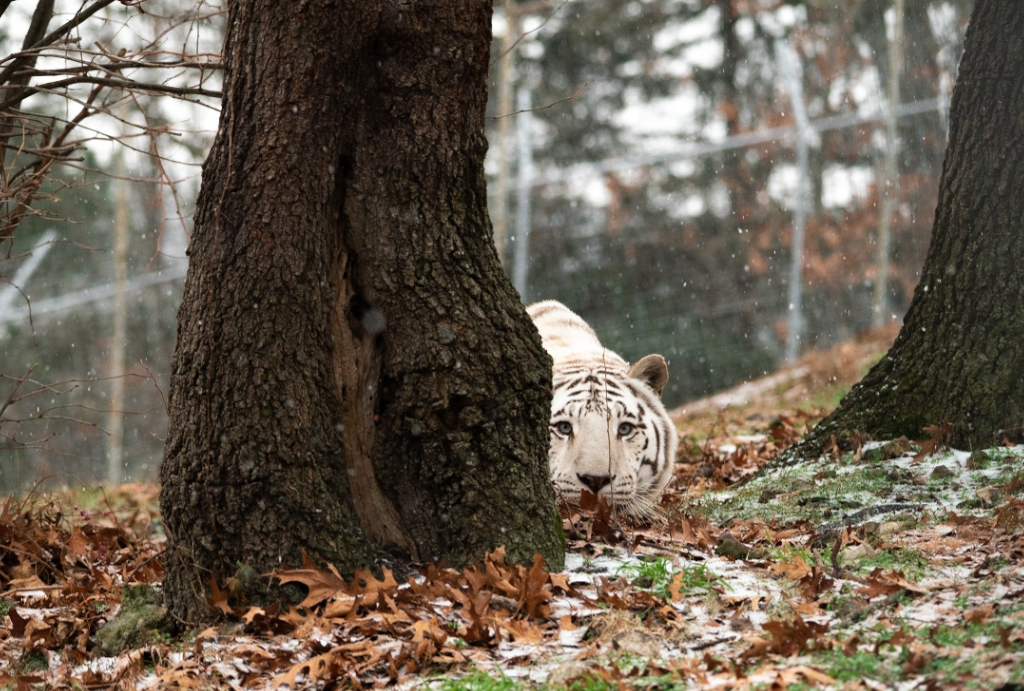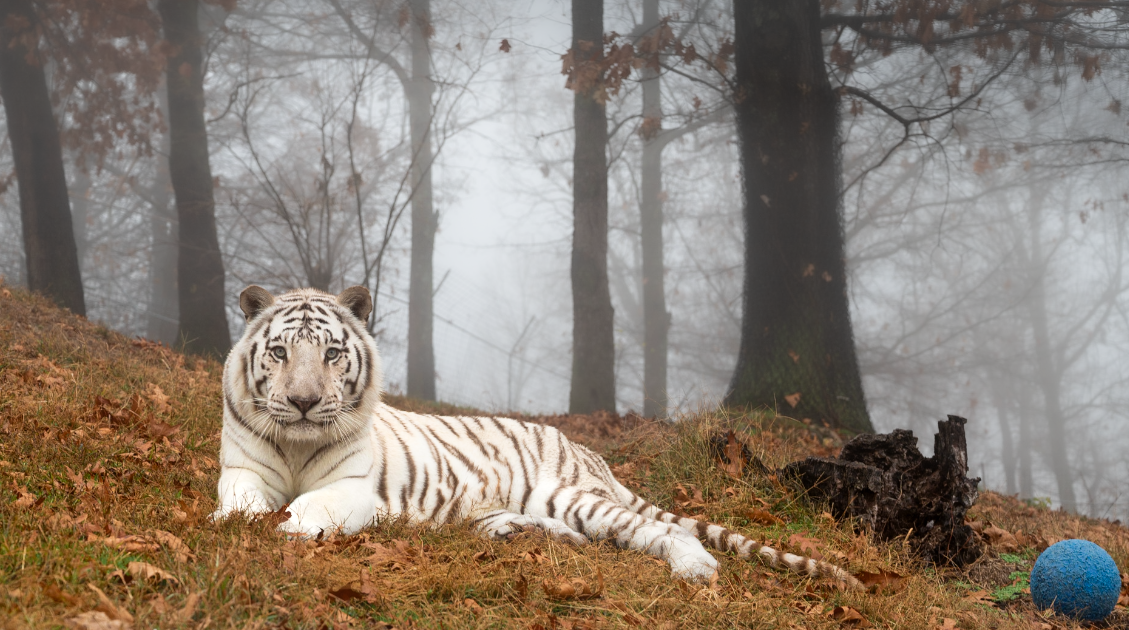
The striking appearance of white tigers, with their bright coats and piercing blue eyes, often captivates the imagination of people worldwide. However, behind this mesmerizing allure lies a stark reality: white tigers are maladaptive to the wild. There have been documented cases of white tigers in the wild – in fact, capturing two of them started the trade in captivity. However, we now know that the rare and beautiful white coat has many more consequences than advantages for wild tigers.
In the wild, the ability to blend into the surroundings is a critical survival trait for tigers. The orange and black stripes serve as natural camouflage in their habitats’ dappled sunlight and dense foliage. This coloration and pattern help them get close enough to their prey to land a successful hunt. White tigers, lacking these essential pigments, are conspicuous and easily spotted by both prey and predators like other tigers (for territorial disputes) and human hunters. White tigers’ lack of camouflage extends beyond hunting prowess. It impacts their ability to avoid conflicts with other predators and territorial disputes with fellow tigers, making them more noticeable to potential threats and competitors. The last white tiger found in the wild was killed in l958.

Tiger habitats span diverse climates, from Siberia’s icy expanses to India’s tropical forests. The white coat, originally arising in tigers from northern regions, is ill-suited for the warmer climates typical of many tiger habitats. White tigers may struggle to regulate their body temperature efficiently, which would put them at a disadvantage in the wild. TCWR has rescued many tigers from a Colorado facility closer to the sun. The tigers with white coats have developed health issues from sun damage, similar to how people with lighter skin need special care with sun exposure.
The genetic mutation (a recessive trait) responsible for the white coat in tigers is often linked to various health issues. Inbreeding, a common practice to produce white cubs consistently, can lead to a myriad of problems, including weakened immune systems, heart defects, and neurological disorders.
While white tigers may captivate audiences in zoos and entertainment venues, their unsuitability for the wild is a cautionary tale against prioritizing aesthetics over adaptability. Conservation efforts should focus on preserving the natural traits that enable tigers to thrive in their native habitats, ensuring a future where these majestic creatures can navigate the challenges of the wild without the burdens imposed by the maladaptive allure of the white coat.
